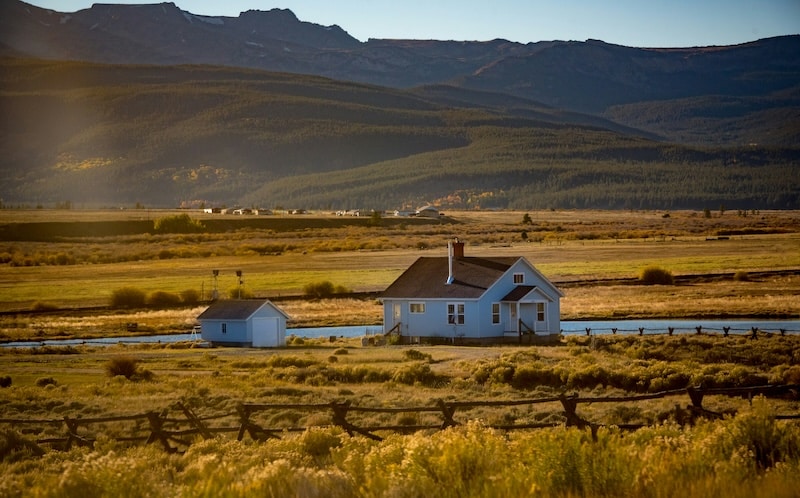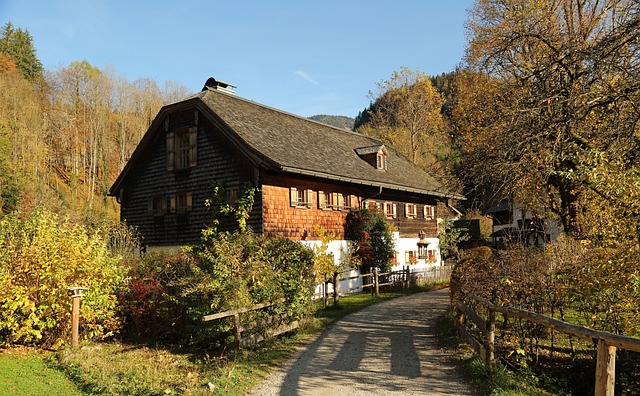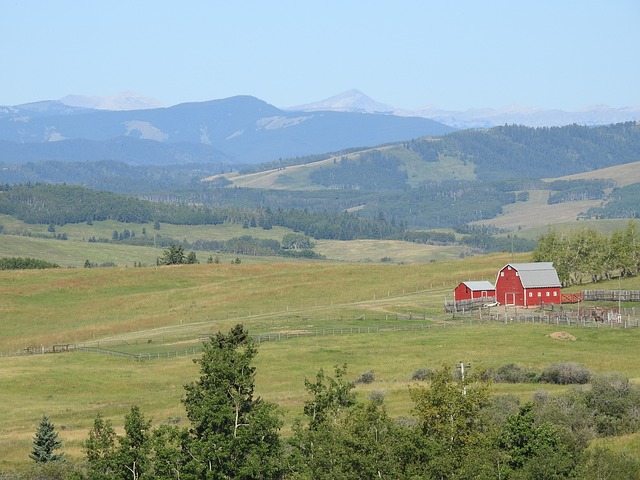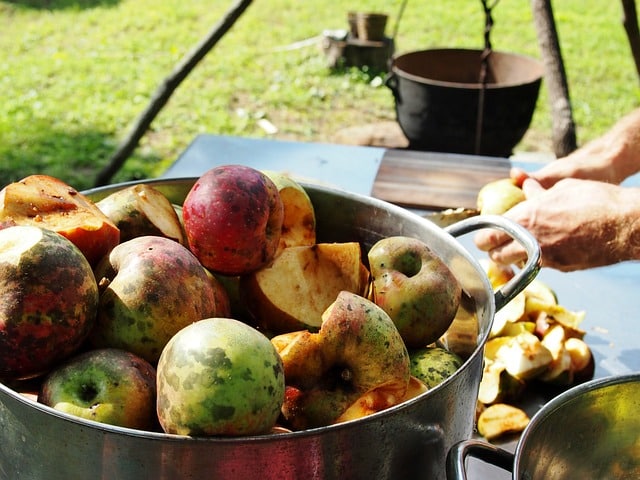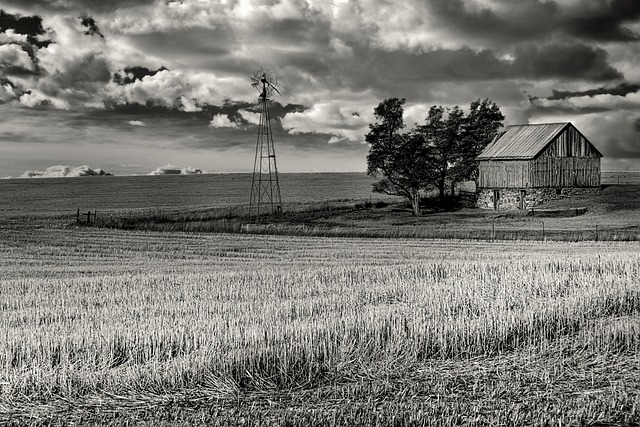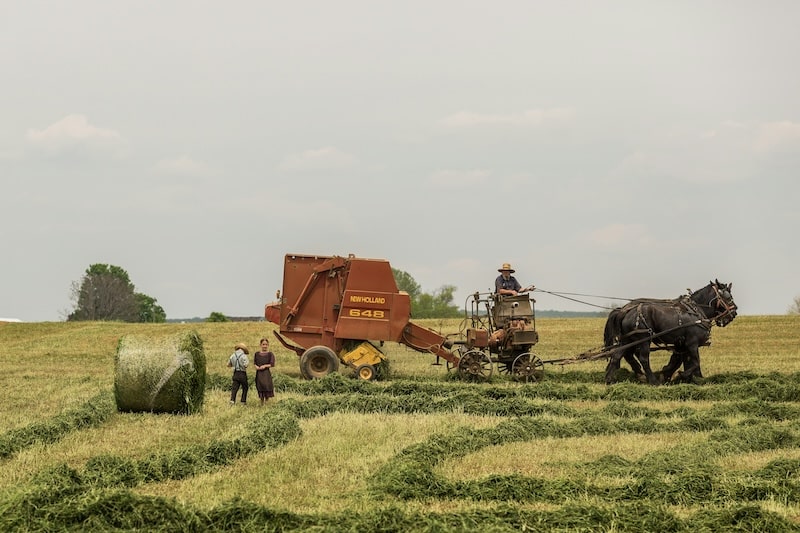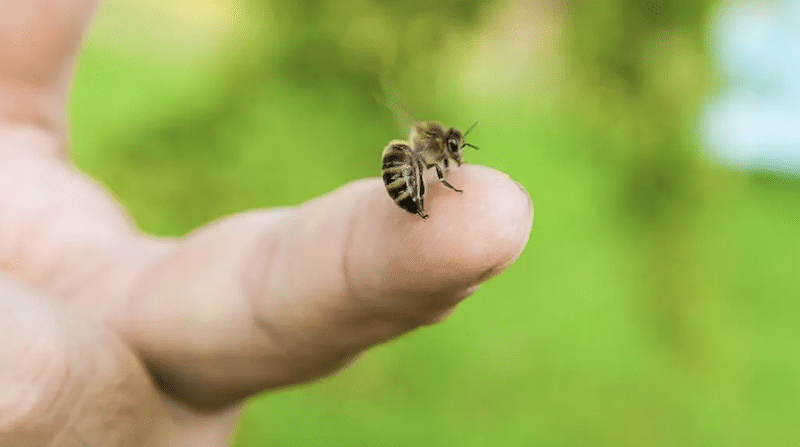Contents:
- What is Homesteading?
- Variations of Homesteading
- The Guiding Principles of Homesteading
- Homesteading Activities and Skills
- History of Homesteading in the United States
- Rise of Modern Homesteading
- The Economic Appeal of Homesteading
- Why Beekeeping is Good for Homesteading
- FAQs
What is Homesteading?
There are many types of homesteading, but all homesteaders share a common desire to step away from consumerist culture and lead simpler, more self-sufficient, sustainable lives. Most homesteaders produce some, if not all, of their own food through farming, fishing, hunting, or foraging. Many employ renewable forms of energy, and some try to live completely off the grid. In seeking simpler lives, homesteaders often make their own clothing and personal care products. Some homesteading families home-school their children.
Natalie Bogwalker, who teaches homesteading skills in Asheville NC, told the Washington Post that homesteading could be described simply as “…living in a way that meets a lot of your needs from the land.”
Variations of Homesteading
Homesteading can involve all aspects of life, or it can be focused on food production and energy use alone. Many work full-time at homesteading, while others support themselves with jobs outside the home. Some seek to withdraw completely from the commercialism of the world, while others raise and sell organic products as a way of supporting themselves and their families.
Rural homesteads can be farms of 100 acres or more, or they can be small holdings of just an acre or two. While some homesteaders move as far from cities as they can get, others stay in cities and practice aspects of homesteading in urban allotments and roof decks.
There is no right or wrong way to homestead — it’s a way of life that you adapt to your needs, abilities and resources.
The Guiding Principles of Homesteading
People come to homesteading with different beliefs and goals, but regardless of what they seek, they share a number of guiding principles:
- Lead a simple life
- Live in harmony with nature
- Treat the earth well — conserve energy, leave as small carbon footprint as possible, and feed yourself sustainably
- Be as self-sufficient as you can
- Gain satisfaction from doing rather than acquiring
Homesteading Activities and Skills
To lead even a modestly self-sufficient life, you must be prepared to do many things yourself that you might, in the past, have hired others to do for you, or purchased ready-made from retailers. Typically, homesteaders do most home maintenance and improvement themselves. They raise and preserve much of the fruits and vegetables that nourish them, bake their own bread, and may raise animals for meat, dairy and eggs.
To supplement what they raise, they may hunt, fish and forage for wild foods. They may make and repair clothes. They may install solar panels and small wind turbines and monitor their electrical use and reserves. If heating with wood, they’ll cut and chop what they need for the winter and will build and tend fires every day. If home-schooling, they’ll hold classes, encourage their children to read, and give feedback on work.
These activities require proficiency in carpentry, painting, basic electrical and plumbing work, gardening and orchard tending, irrigation and water purification, animal husbandry, cooking and food preservation, and sewing and knitting.
To achieve your homesteading goals and be satisfied with a homesteading life, you’ll need soft skills, such as:
Self-reliance. You should be prepared to do most things for yourself, and not expect others to do them for you.
Adaptability. Life in the natural world is ever-changing. Recognizing changes as they occur and being ready and willing to take advantage of them will keep you moving forward.
Resilience. Things will go wrong. Unforeseen things will happen. When they occur, you need to bounce back quickly.
Patience. Some aspects of homesteading take a long time to come to fruition. You must accept this, stay focused on the long-term, and be willing to wait.
Problem Solving. When problems occur, you need to analyze the situation, find solutions, pick the best, and be prepared to tackle it yourself.
Positive attitude. Homesteading is hard work, and many activities can be boring and repetitive. Looking on the bright side will help you get through difficult times, and let you find joy in everyday activities.
Empathy. Few choose to homestead alone — most homesteads are set up by couples, families, or groups of close friends. Dividing up jobs equitably and working together on projects can lead to friction. Remembering why you all chose to homestead and accepting that everyone has strengths and weaknesses, and feeling genuine empathy for each other, will make for more harmonious living conditions.
History of Homesteading in the United States
THE FIRST HOMESTEADERS
While most articles written about homesteading cite the 1862 Homestead Act as the origin of the movement, real credit should be given to Native Americans, who practiced homesteading here in North America for thousands of years before the first Europeans arrived. They lived in harmony with the land and led fully sustainable lives. They fed themselves through farming, hunting, fishing and foraging. They heated and cooked with wood they gathered. They made everything they needed themselves.
During the first 200 years of European settlement, most families were largely self-sufficient, feeding and clothing themselves through subsistence farming. Many had come from tenant farms in Europe and were proud to own their own land. They didn’t think of themselves as homesteaders, but they were achieving what homesteaders seek today.
HOMESTEADING AS A REACTION TO INDUSTRIALIZATION
In the 19th century, the growth of industry drew many to towns and cities to work in factories and to sell goods and services to each other. But not all people wanted to live in urban environments — many wanted the independence and healthy lives found on farms. As the population grew in the east and land became scarce and expensive, young families and immigrants were drawn first to the Ohio and Mississippi valleys, then the Great Plains states and the West Coast. Improved transportation, such as the development of the transcontinental railroad, spurred their journeys westward. They could purchase land cheaply in these areas and set up self-sufficient farms, as the first settlers had done generations before.
THE 1862 HOMESTEAD ACT
During the Civil War, to promote the settling of lands west of the Mississippi by free farmers, Congress passed the Homestead Act, which offered up to 160 acres of public land for a nominal fee to anyone who had never taken up arms against the federal government and was willing to claim, settle, and farm property for at least five years.
Between 1862 and 1934, 1.6 million homesteads were established on 270,000,000 acres — more than 10% of the land in the continental U.S. The drive to settle these lands led to the displacement of Native Americans and their forced removal onto reservations.
A Southern Homestead Act was passed in 1866 which attempted to redress the inequities of land ownership in the former Confederacy. While bitterly opposed by whites who created a host of barriers to black land ownership, by 1900, nearly a quarter-million farmers owned over 15 million acres of land.
DEPRESSION ERA HOMESTEADING
While the dust bowl drove many homesteaders off their farms, some urban dwellers, facing long-term unemployment during the Great Depression, looked to small-scale farming as a solution. As part of the New Deal, the Roosevelt administration set up the Subsistence Homesteads Division in 1933 to help them by providing low-cost homes to rent with small plots they could farm to sustain themselves.
This program faced intense opposition from the Farm lobby, which felt that these micro-farms would undercut already struggling farms. After only a few dozen Homestead communities were created, it was shut down. In its place Congress passed the Small Tracts Act in 1938, which offered small plots of government land, usually ten or so acres, to private individuals for homes or other private needs.
BACK TO THE LAND MOVEMENTS
After the Second World War, there was a small back-to-the-land movement, fueled by books such as Frank Borsodi’s Flight from the City (1933), Louise Dickinson Rich’s We Took to the Woods (1942), and Betty MacDonald’s The Egg and I (1945), which extolled the virtues and adventures of the rural life.
During the counterculture movement of the 1960s and 1970s, thousands of disaffected people, fed up with the consumerism of modern America, dropped out and moved to the country seeking simpler, more self-sufficient lives. They were the forerunners of today’s modern homesteaders.
Many went into farming without the skills or endurance needed to survive, and some gave up after only a few years. Others had the grit and determination to thrive in their new lives, and some turned a passion for a particular type of farming into thriving businesses raising heirloom meat and organic produce, creating natural soaps and cosmetics, running farm-to-table restaurants, and producing artisanal cheese and ice cream.
RISE OF MODERN HOMESTEADING
Over the past three decades, a number of factors have combined to create a new wave of homesteading:
- The growing environmental movement
- The high cost of urban life, especially in cities such as Boston, New York, San Francisco, and Seattle
- The exploitative approach so many businesses take towards their employees and the burn-out that has resulted
- Disaffection with institutions and their inability to enact needed change
- Revulsion over the state of the world and a desire to withdraw from it
COVID-19 created a population of young people facing fresh starts due to layoffs, furloughs and quitting their jobs. The rise of remote work during the lockdowns showed others that they could move out of the city and survive. Since 2000, homesteading has been growing rapidly, and almost half of these new homesteaders are 39 or younger.
While some choose to drop out completely, moving far from towns and cities and living completely off the grid, other homesteaders blend bits of their old lives with the new — they may spend half their time farming, and half telecommuting to an urban job.
Some are attracted to a simpler life but find they can’t leave the city. These urban homesteaders may grow fruits and vegetables in an urban allotment, raise chickens and bees in their backyard, produce electricity from solar panels on their roof, and walk or bicycle to work. While not off-the grid, they’re living much simpler and more sustainable lives.
A great resource for information on modern homesteading and homesteaders is Homesteaders of America.
The Economic Appeal of Homesteading
After an initial investment in seed, animals, tools and equipment, you may find significant economic advantages to homesteading.
- Simplified living can dramatically reduce what you spend on goods and services.
- Growing most of the fruits, vegetables, and grains you eat, and raising your own animals, will mean big savings on groceries.
- Practicing sustainable agriculture will eliminate the need for fertilizer and pest control chemicals.
- Producing most, if not all, of the electricity you use through renewable energy sources can save you hundreds of dollars a month. Heating with wood, or through heat pumps, can save on fuel bills as well.
- If you grow more than you eat, you can sell the surplus for a profit at farmers’ markets and through local retailers. You can also barter and trade with other homesteaders.
- Homesteading skills, such as fence making, wall building, brush clearing, can be money making services you offer to people in your community.
- With a much more efficient, low-cost lifestyle, you may be able to save and invest in companies that share your commitment to sustainability.
Well-established homesteaders often cite a sense of financial freedom as one of the primary benefits of homesteading.
Why Beekeeping is Good for Homesteaders
Beekeeping can improve your farm yields, make you more self-sufficient, save you money on sugar purchases, and provide an additional source of income.
If your goal is to be as food self-sufficient as possible, as a homesteader, you’ll be growing most of your own fruits, nuts and vegetables, and taking seeds at the end of each season for next year’s crops. To be sure your gardens, orchards and berry patches yield the most produce, they must be fully pollinated, and for pollination you’ll need bees, who are the primary pollinators of most fruits and vegetables. The best way to assure you have enough bees is to keep honey bees and provide habitat for native bees.
To understand how important honey bees are to agriculture, read our blog Bees and Agriculture: A Critical Symbiotic Relationship.
To learn more about the basics of beekeeping, read our blog Backyard Beekeeping: All You Need to Know.
To discover the role native bees play, read our blog Wild Pollinators and Native Bees.
To learn how you can help native bees to thrive, read our blog A Bee Hotel Overview: How To Build, Maintain, And Attract Native Pollinators To Them.
While bees are essential to growing your own food, the honey they produce is also an excellent, natural sweetener. Keeping a few bee hives can yield as much as 100 pounds of honey each year — more than enough to replace the sugar you’ll need for preserving fruit, making baked goods, and sweetening beverages. You can use honey, royal jelly, and propolis in home remedies and personal care products. Beeswax can be used to make candles, lubricate door hinges and screws, polish and preserve copper pots and pans, condition wooden furniture, and so much more.
Once you’re comfortable keeping one bee hive, it’s only a little more work to keep a few more. Tending a 6-8 hives could yield 200 pounds of honey each year, and if you use 50 pounds or less, you can sell the balance at local farmer’s markets for a profit of $1,000 or more.
FAQs
Q: What is homesteading?
A: Homesteaders share a common desire to step away from consumerist culture and lead simpler, more self-sufficient, sustainable lives. Most homesteaders produce some, if not all of their own food through farming, fishing, hunting, or foraging. Many employ renewable forms of energy, and some try to live completely off the grid. In seeking simpler lives, homesteaders often make their own clothing and personal care products. Some homesteading families home-school their children.
Q: What is a homesteader?
A: A homesteader is an individual. Couple, family, or group of close friends who seek simpler, more self-sufficient, sustainable lives. They may live completely off the grid in remote rural areas, or practice as much self-sufficiency as they can on a small property, urban backyard, or roof deck. They may support themselves completely through farming or supplement their part-time or full-time work.
Q: How can I get started homesteading?
A: To start homesteading you should educate yourself on what it will take to be self-sufficient, then start small and develop the skills you’ll need to grow fruits and vegetables and raise animals. Once you’re comfortable with the basics, you should set goals for yourself, and a plan to gain greater self-sufficiency. Be prepared for it to take time for you to develop the skills you’ll need and to gain the level of self-sufficiency you desire. Expect things to go wrong; learn from them; pick yourself up and keep going. To learn more about how to get started homesteading, read this article How to Start a Homestead: A Beginner’s Guide.
Q: Is homesteading illegal in the US?
A: There are no federal or state laws preventing people from pursuing a homesteading lifestyle, but some municipalities may have restrictions on the number and type of animals that can be raised, and what can and can’t be built on your property.
Q: What activities do homesteaders commonly do?
A: Homesteading can involve a host of different activities, from growing fruits, vegetables, nuts, and cereal crops, to raising animals, preserving food, building and repairing your home, barns, sheds, garden beds and fences. It can also entail installing and maintaining solar panels and small wind turbines, cutting and chopping wood, sewing and repairing clothes, making soap, cosmetics, and home remedies, selling agricultural and craft products at farmer’s markets and to local retailers, and home-schooling children.


